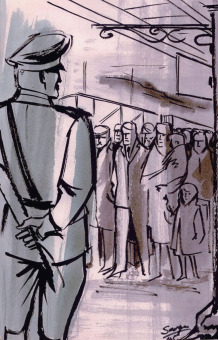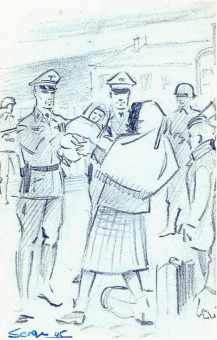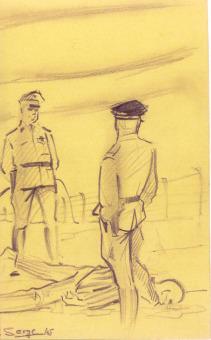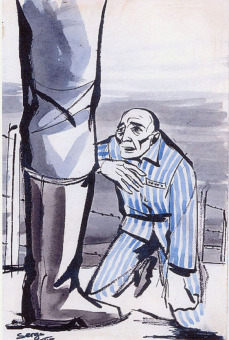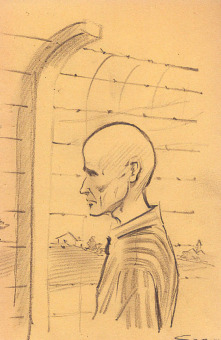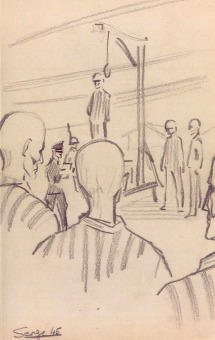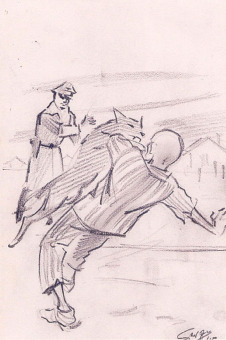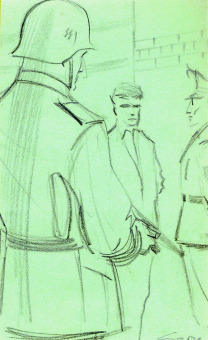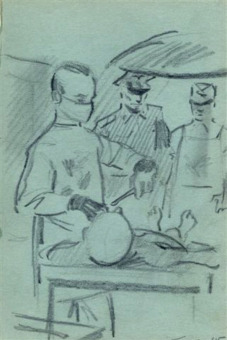Serge Smulevic: Pictures of the Buna/Monowitz Concentration Camp
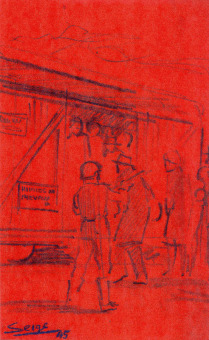
I often think about that, and I try to remember the different kinds of plants that we picked along the roads, at the risk of getting a good thrashing, for it was equally forbidden, ‘streng verboten,’ to eat herbs or plants, because we quickly got diarrhea when we did. On the other hand, if we were lucky enough to find some horse dung, one picked it up and once back at the camp, one picked it apart to find the hay that the horse had eaten. And one found a way to have it cooked by someone who was able to do it, and in this way one got splendid flaked hay. When I think about it now, I sometimes make a face at a dish of carrots .... You’ll say that these are little details, but they made up part of daily life. Of course, there were those for whom all these things had lost all meaning. And all the others who were sensitive to them didn’t dare talk about them for fear of ridicule, but one discerned well enough in their eyes the gleam of hope that a red poppy could give them.”
Serge Smulevic was born in Warsaw on June 6, 1921, and he and his parents emigrated to France in 1923. They opened a lingerie store in Petite-Rosselle near Forbach, and then moved to Thionville in 1925. After finishing school in Thionville, Serge Smulevic studied at the Ecole des Beaux-Arts in Strasbourg in the years 1935–1939. After the invasion of the German Wehrmacht, he joined the French Resistance (Francs Tireurs et Partisans), using the alias Georges Dupayard, and helped provide false papers to children in hiding in Nice. His landlady denounced him, and Serge Smulevic was imprisoned on August 24, 1943, and deported to Auschwitz in December 1943, after several months in jail in Nice and a few days in Drancy. At the Auschwitz ramp, he was selected for forced labor in the Buna/Monowitz concentration camp.
He was able to survive the time in the camp because he made pictures for SS men and drawings of their families. When the camp was vacated in January 1945, Serge Smulevic also was forced to go on the death march. He reached Gleiwitz on foot and traveled in freight cars through Flossenbürg to Dachau, where the U.S. Army liberated him on April 29, 1945. He was greatly weakened and suffering from typhus; it took two months for him to recover to a point where he could return to France. There Serge Smulevic started painting pictures of his time in the camp. In September 1947, he received an inquiry from the lead investigator in the case against I.G. Farben, Benvenuto von Halle, asking him to draw scenes from Buna/Monowitz for use in the I.G. Farben trial at Nuremberg. These pictures, drawn in sketch style on colored or tinted paper, show moments of deportation, selection after arrival at the camp, and the Germans’ arbitrariness.
Serge Smulevic moved to Brussels in 1947, as he could find no work in France, and married there. Along with his family, he returned to France in 1979. His parents survived the war in Switzerland and then went back to Thionville; they died in Belfort in the early 1980s. Serge Smulevic worked as a cartoonist and illustrator, in part for the newspapers Le Soir, Le Soir Illustré, and La Libre Belgique. He wrote poems about his confinement in the camp and until his death in 2010, he continued to take part in contemporary witness talks, to tell schoolchildren about the extermination of the European Jews.
(SP; transl. KL)



















